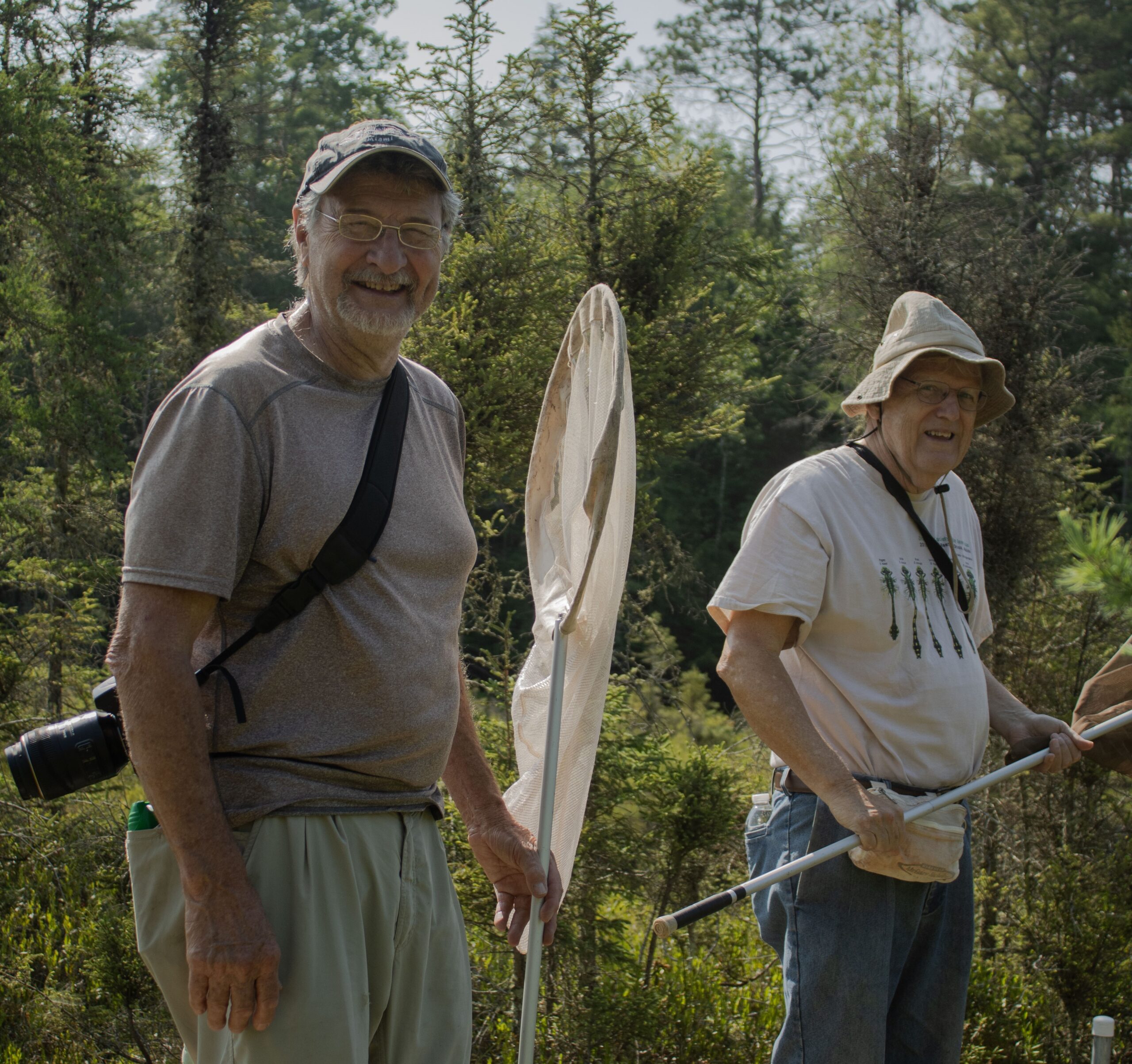
Madelyn Anderson

Madelyn Anderson
What ecosystem do you inhabit? Look around. Notice the light coming through, the ground beneath your feet. What lives here? Who are you exchanging air with? For field ecologist Elliot Hendry, these connections are consistently at the forefront of his mind.
As a recent graduate of the University of Wisconsin–Madison’s Master’s in Freshwater and Marine Sciences program, Hendry specializes in connections. His thesis focused on invertebrate communities across spring systems in the Madrean Sky Islands, where he spent many field days. However, Hendry wasn’t simply collecting data and making scientific observations. He was forming a relationship with the land.

“There’s nowhere on Earth that doesn’t interest me, but I’m particularly drawn to places that feature stark contrasts – like water in the desert,” Hendry said. “Imagine this: you’ve been walking through this barren, dry desert landscape, and then you drop down into a canyon. Suddenly you see this big long stretch of green. Large cottonwoods hang overhead, birds inhabit them, dragonflies buzz about, while thorny shrubs and cacti stand rooted just outside this lush corridor. This riparian ecosystem has been created by the simple emergence of water from rock, at an elevation where this particular community can form”.
While Hendry translates his awe of ecosystems into findings and formatted papers, he also practices eco-poetry. When you google his title, you not only find his background as a field biologist, but a WordPress blog full of poetic musings.
What is now a flourishing site started as simply taking time to journal.
“When it comes to poetry, I don’t have much of a process except to pay attention. That’s the root of it,” Hendry said. “Listening, tuning in to where you are, what’s going on around you, what’s going on within you.”
He said paying attention to your surroundings is a staple when you work in conservation. His thesis involved “331 springs..comprising ~40% of the total number of mapped springs in Arizona’s portion of the Sky Island ecoregion.”
But not every person’s job demands such attention to detail. Taking time to craft an experience with the world around you may be taxing, but Hendry argues that it’s vital to get more people involved with preserving nature.
Additionally, he adds that these connections can be made anywhere.
“Eco-poetry surely has an ability to encourage people to care enough about where they are or a place they want to preserve – wherever they are compelled enough to write a poem,” Hendry said. “If we can find practices that encourage us to care about how we interact with “the other” – whatever that other is – we stand a much better chance at preserving things that help us build and maintain those kinds of relationships – like ecosystems.”
The idea of blending science with individual expression is not new. Renowned botanist and author Robin Wall Kimmerer wrote extensively about the power of the names we give to nature, whether those be scientific or cultural. However, the amalgamation of science and art is relatively novel.
“I think a lot of people in the sciences might not think about, or at least not talk about, translating their work artistically,” Hendry said.
He noted that while there are opportunities to do both, you don’t commonly see scientists making space for creativity in their work. Hendry speculated this is a “cautionary measure,” as the pillars of science involve staying objective, while art tends to be more subjective.
“I think some people shun the sciences for how un-feeling they are, while other people may shun the arts for how subjective they are,” Hendry said. “I think they need each other. I certainly need both.”
While this may appear to be a rare perspective, Hendry is not the only one working at this intersection. Dragonfly researcher Ken Tennessen has long shared Hendry’s passion for paying attention to the environments he works in.
“To me, insects are the most incredible, diverse, and fascinating group of living things,” Tennessen said. “Dragonflies are my main passion because of their uniqueness, the imagery they cast, and their novel behaviors. They epitomize the natural world”.

Tennessen’s work has largely involved documenting dragonfly species, but his experiences also include publishing a book titled Dragonfly Haiku.
“In writing more than just technical papers about them, I feel I can also connect on a more personal and enlightened level by writing poems about dragonflies, especially in the form of haiku,” Tennessen said.
While his work expands into creative writing, Tennessen has published over 100 scientific papers on dragonflies. One paper, “Dragonfly Nymphs of North America”, touches on seven dragonfly families in detail.
Still, there is more to be done. According to that research, published in 2019, 50 species remain “inadequately known.”
He is currently working on a second eco-poetry publication, After the Storm. The work will contain 99 haiku and reference “not just weather but to all the perils dragonflies as a group have overcome since their origins over 300 million years ago,” according to Tennessen. It will also have nine images from a young artist.
“The poems are divided into three sections: 1) aspects of dragonfly life in their natural environment, i.e., the interactions, challenges, and triumphs; 2) exploring how humans share some of the same issues facing dragonflies, including a little fantasy on my part; 3) delving into the connection humans have with these alluring insects,” Tennessen said.
The relationship between humans and other living beings drives much of Tennessen’s creative practice. He shares Hendry’s sentiment that it can have the power to inspire environmental stewardship.
“I glean much about the living world through poetry and feel that maybe I can help others gain a greater appreciation for nature,” Tennessen said. “My aspiration is that with heightened awareness of how vulnerable insects are to human activities, more will be done to protect them and all living things. Our survival depends on it.”